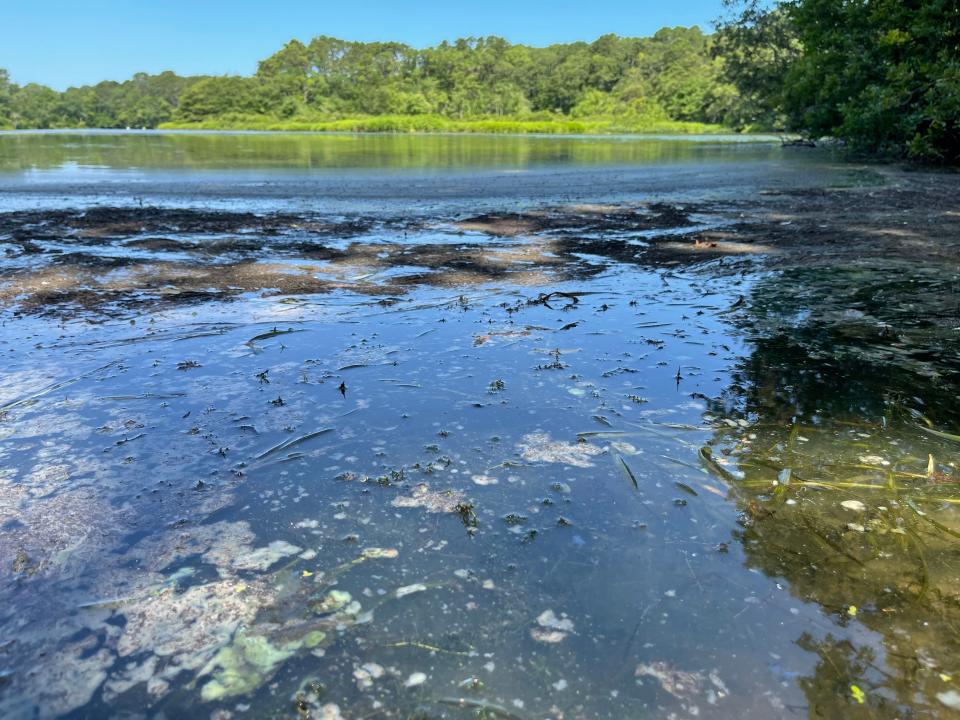Opinion/Your Turn: Cleaning up Cape Cod's septic problem
Nitrogen pollution from improperly treated wastewater is pushing Cape Cod’s waters to the brink of ecological disaster. This pollution leads to toxic blue-green algae outbreaks that are killing wildlife, sickening humans, reducing property values and disrupting the Cape’s critical tourism economy.
The solution to this pollution problem is well known: Fix the region’s septic and wastewater treatment systems — now. Unfortunately, cities and towns as well as the state have dragged their feet in implementing the changes we know are needed to ensure that this toxic pollution comes to an end.

Finally, Massachusetts officials are updating the regulations that specify how Cape Cod communities deal with their wastewater. They have released a draft plan that will begin to protect and restore water quality in watersheds on Cape Cod.
Cleaning the Cape's water:State's proposed nitrogen regulations put a tight deadline on Cape wastewater management
The new regulations would identify and protect waters that are impaired by nitrogen pollution by raising the standards for septic systems. They also require cities and towns to develop plans to protect their impaired watersheds and show state officials how their plans will be effective. Officials would be required to evaluate those plans and will only issue permits when the plan meets certain water quality standards.
This is a major step forward after years of inaction from the state, which has resulted in wastewater flowing from septic systems into ponds and bays for many years. Unfortunately, it is only a first step in the right direction.
Nearly 85% of Cape Cod’s homes rely on septic systems to treat waste. But these systems aren’t designed to eliminate nitrogen, which moves through the region’s uniquely porous soil and seeps into local waters. The nitrogen causes brown, slimy, smelly algae outbreaks that choke off life in the bays and turn them from gorgeous, sparkling waters into a nasty mess that no one can use.
Related:Phinneys Harbor anticipated to be first focus of new septic systems reviews next year
Homeowners are not to blame, though. Every time a house is built or sold, a state policy called Title 5 mandates that its septic system does not jeopardize human health or the environment. Yet regulators have failed to enforce that mandate for years, until now.
These new draft regulations are an important step, but we have the chance to make them even stronger before they become final. Most importantly, the loopholes that can be exploited to delay action and shirk responsibility must be closed. The new regulations must require steps to be taken quickly to make sure that water quality protection efforts don’t come too late to be effective. Finally, the regulation should tackle this important problem from all angles, rather than allowing cities and towns to wait for sewers that serve small areas and are decades away from being built.
The release of these new regulations presents the first real opportunity to clean up dirty wastewater pollution on Cape Cod in many years. State regulators deserve credit for finally stepping up to the plate and taking their responsibility seriously. But we shouldn’t settle for the bare minimum. Let’s take advantage of this opportunity to ensure that septic pollution no longer flows into our cherished bays and ponds.
Brad Campbell is president of the Conservation Law Foundation in Boston.
Gain access to premium Cape Cod Times content by subscribing. Check out our subscription offers.
This article originally appeared on Cape Cod Times: New MA septic system regulations are designed to stop water pollution

